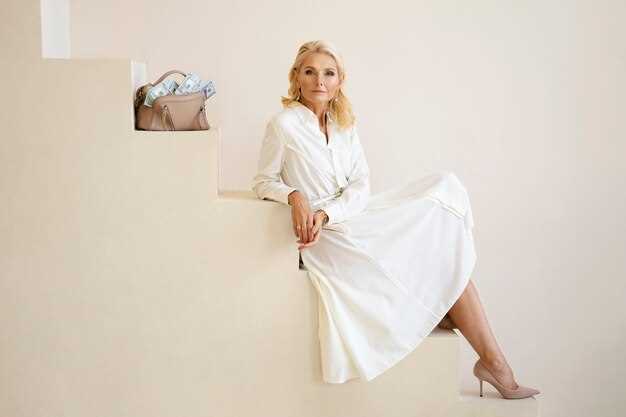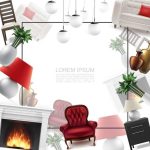Choose a color palette of neutrals like black, white, beige, and navy. These shades easily mix and match, creating endless outfit combinations. Invest in high-quality pieces that stand the test of time. Look for durable fabrics and well-constructed garments that resist trends.
Prioritize versatility in every purchase. A classic white button-up shirt can be styled for both casual and formal occasions. A tailored blazer elevates any look instantly, whether paired with jeans or trousers. Consider favorite silhouettes that flatter your shape, allowing you to feel comfortable and confident.
Limit your wardrobe to around 30-40 essential items. This core collection includes tops, bottoms, outerwear, and shoes. Regularly evaluate your closet; donate items that no longer serve you. This decluttering process not only refreshes your wardrobe but also enhances your style clarity.
Accessorize mindfully. Invest in a few quality pieces, such as a leather handbag or a classic watch. This way, you enhance any outfit without overwhelming your minimalist approach. Prioritize pieces that complement multiple looks, ensuring your style remains refined and cohesive.
Understanding the Principles of Minimalist Fashion
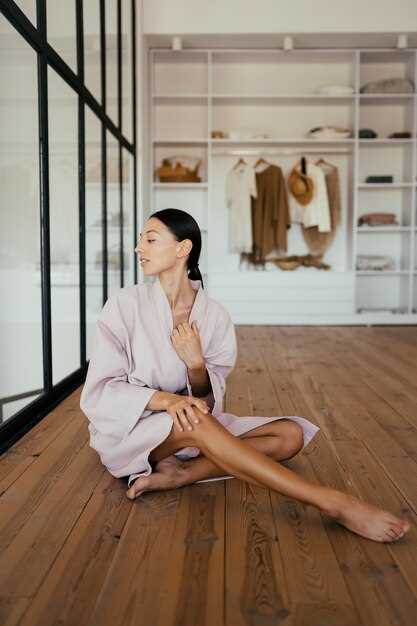
Focus on quality over quantity. Invest in well-made pieces that stand the test of time, avoiding fast fashion items that wear out quickly. Look for items crafted from durable materials like wool, cotton, or linen.
Choose a neutral color palette. Base your wardrobe on timeless shades such as black, white, gray, and beige. This allows for easy mixing and matching, enabling you to create multiple outfits with fewer items.
Prioritize versatility. Select pieces that can be dressed up or down. For example, a tailored blazer can elevate casual jeans or complement a more formal look, expanding your options with fewer items.
- Incorporate layering. Layering adds depth to your outfits while maximizing the wear of each piece. Choose cardigans, lightweight jackets, or oversized shirts for versatility.
- Embrace simplicity in design. Opt for clean lines and classic silhouettes without excessive embellishments. This adds to the timelessness of each garment.
Limit trendy items. While it’s tempting to follow the latest trends, focus on styles that resonate with your personal aesthetic and offer longevity.
- Assess your lifestyle. Identify the key pieces required for daily activities, such as work, casual outings, and social events.
- Create a capsule wardrobe. Select around 10-15 high-quality pieces that work well together to maximize outfit combinations.
Regularly review your wardrobe. Periodically eliminate items you rarely wear. This practice helps maintain a refined collection that’s easy to navigate.
Remember comfort. Prioritize clothing that feels good and enables you to move freely, ensuring you look and feel your best.
By applying these principles, you can effectively cultivate a minimalist wardrobe that is both functional and stylish, allowing for effortless style every day.
Identifying Key Wardrobe Basics for Everyday Wear
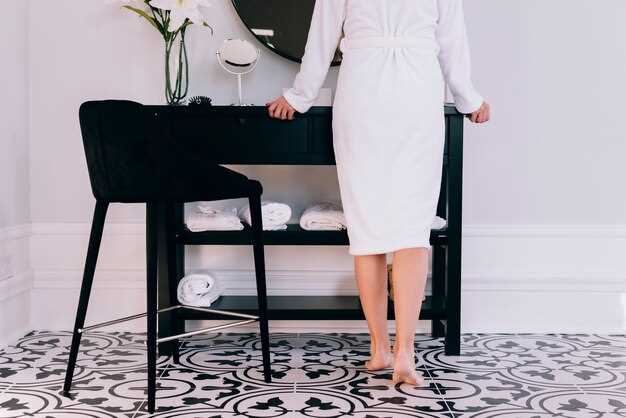
Begin with a crisp white shirt. This piece pairs well with virtually anything, from jeans to skirts, ensuring a polished look for various occasions.
Next, invest in a quality pair of well-fitting jeans. Dark wash denim offers versatility, seamlessly transitioning from day to night. Look for styles that highlight your silhouette while providing comfort.
Add a tailored blazer to elevate outfits instantly. A classic black or navy blazer works wonders over casual wear or can be layered for a smart look in professional settings.
Incorporate a little black dress. This timeless staple is perfect for any event, easily styled with accessories to match the occasion. Keep the silhouette simple for maximum adaptability.
Don’t overlook outerwear. A classic trench coat or lightweight jacket in a neutral color provides warmth without sacrificing style on cooler days.
Footwear plays a pivotal role. A pair of clean white sneakers delivers casual comfort, while versatile ankle boots can complete a variety of ensembles, from skirts to trousers.
Accessorizing is key. A structured handbag in a neutral hue and a few minimalist jewelry pieces enhance outfits without overwhelming them. Opt for items that can be mixed and matched effortlessly.
Ensure you have foundational items like basic tees and tank tops. These serve as the base for layering and can be worn alone or beneath other garments.
Choose a few high-quality sweaters in classic cuts. These pieces add warmth and style, perfect for layering during cooler months.
Finally, focus on fit. Tailoring can transform even the simplest items, ensuring a polished and intentional appearance in everything you wear.
How to Create a Capsule Wardrobe with Limited Pieces
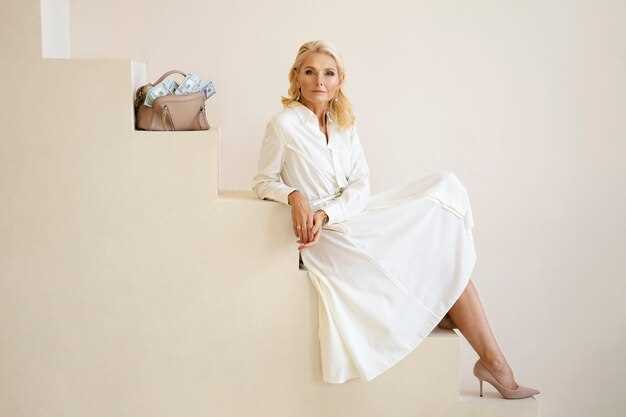
Choose a color palette that resonates with you. Stick to neutrals and a few accent colors to ensure all pieces can mix and match seamlessly. This approach simplifies outfit creation and enhances versatility.
Select around 20-30 pieces, including tops, bottoms, dresses, outerwear, and shoes. Focus on quality rather than quantity. Invest in timeless items such as a classic white shirt, tailored trousers, and a versatile dress. These foundation pieces serve as the backbone of your wardrobe.
Incorporate layers to adapt to varying climates. A lightweight cardigan or a fitted blazer can transform an outfit from day to night while providing extra warmth when needed.
Accessorize thoughtfully. Limit yourself to a few jewelry pieces, bags, and scarves. Select items that complement multiple outfits, enhancing your looks without overwhelming your selections.
Evaluate each item for functionality and style. Ask yourself if it fits well, is comfortable, and aligns with your overall style goals. If it doesn’t meet these criteria, consider removing it from your wardrobe.
Regularly review your capsule wardrobe. Assess what you haven’t worn lately and identify any gaps that might need filling. This practice helps maintain a curated collection that continues to serve your lifestyle effectively.
Experiment with different combinations. Mix textures and patterns to keep your outfits fresh. Challenge yourself to create new looks with the same pieces to maximize their potential.
Store seasonal items separately. Keep your capsule collection focused on the current season, rotating pieces as needed to fit your lifestyle. This practice maintains clarity and organization in your wardrobe.
Choosing Timeless Colors and Fabrics for Versatility
Opt for a color palette that enhances your wardrobe’s versatility. Neutral colors such as black, white, grey, navy, and beige create a solid foundation. These shades easily mix and match, allowing for endless outfit combinations.
- Black: Ideal for formal and casual settings, black offers sophistication and ease. A classic black dress or pants can transition from day to night effortlessly.
- White: Clean and crisp, white pieces exude freshness. A tailored white shirt pairs well with almost anything, making it a staple choice.
- Grey: Ranging from light to charcoal, grey provides a softer alternative to black. It serves as a versatile base, complementing other colors seamlessly.
- Navy: This rich color adds depth and can act as a neutral. Navy blazers or trousers lend refinement to both professional and casual outfits.
- Beige: Warm and inviting, beige works particularly well in warmer months. It adds a touch of elegance to skirts and light trousers.
Choose fabrics that stand the test of time and offer comfort. Look for options like cotton, wool, silk, and linen. Each fabric has unique qualities that contribute to the longevity of garments.
- Cotton: Breathable and easy to care for, cotton is versatile for both casual and formal wear. Consider investing in high-quality cotton tees and button-ups.
- Wool: From sweaters to tailored suits, wool provides warmth and structure. Opt for merino wool for softness and durability.
- Silk: Luxurious and elegant, silk elevates any outfit. A silk blouse can effortlessly transition from office wear to a night out.
- Linen: Perfect for warmer weather, linen remains breathable and stylish. Choose linen trousers or dresses for effortless summer looks.
Selecting timeless colors and fabrics not only simplifies dressing but also enhances the longevity and versatility of your wardrobe. Prioritize quality, fit, and natural fabrics to build a collection that withstands trends while keeping you stylish and comfortable.
Strategies for Mixing and Matching Outfits Effortlessly
Begin with a neutral base. Choose pieces like black jeans, white shirts, or beige blazers that serve as versatile foundations. Such items can easily pair with various colors and patterns.
Utilize color theory. Select colors that complement each other using a color wheel. For instance, combine warm tones with similar shades or create contrast with complementary colors like navy and orange.
Incorporate layers. Use lightweight jackets or cardigans to add depth to your outfit. This approach not only makes the look more interesting but also allows for adaptability across different occasions.
Mix textures. Combine different materials like denim, cotton, and silk to create visual intrigue. A silk blouse with wool trousers or a denim jacket over a cotton dress enhances the overall aesthetic.
Experiment with proportions. Tuck in loose tops with fitted skirts or wear oversized sweaters over tailored trousers. This play with shapes can redefine your look and enhance your silhouette.
Access your accessories. Scarves, hats, and statement jewelry can transform an outfit instantly. Try various combinations to find what elevates your base pieces without overwhelming them.
Create a capsule wardrobe. Curate a selection of outfits that mix seamlessly. Select versatile pieces and make sure each item complements multiple others for effortless coordination.
Try monochromatic looks. Dressing in a single color, with varying shades, creates a sleek appearance. Pair similar tones to establish an elongated silhouette while keeping it chic.
Don’t shy away from patterns. Stripes, florals, or polka dots can add personality. Pair a patterned top with solid bottoms or mix different patterns in similar color schemes for a fun effect.
Lastly, document your outfits. Take photos of your combinations to remember what works well. Over time, this will simplify the process of selecting outfits and mixing them up again.
Essential Accessories to Enhance Minimalist Looks
A simple leather belt adds polish and sophistication to any minimalist outfit. Opt for neutral colors like black or brown to maintain versatility. This accessory not only serves a practical purpose but also accentuates the waist, creating a defined silhouette.
A classic wristwatch embodies both functionality and style. Choose a sleek design with a minimalist face to complement your wardrobe. A metal or leather strap enhances its adaptability, ensuring it pairs effortlessly with both casual and formal attire.
Quality Bags for Functionality
A structured tote or crossbody bag offers practicality without overwhelming your outfit. Select high-quality materials, such as leather or canvas, in solid colors. This approach keeps the focus on the overall look while providing ample space for daily essentials.
Timeless Jewelry Pieces
Tips for Maintaining and Caring for Your Minimal Wardrobe
Invest in high-quality hangers. Choose wooden or padded options to maintain the shape of your garments. Avoid plastic hangers that can warp or damage fabrics.
Wash clothes thoughtfully. Check labels for specific care instructions. Use cold water whenever possible to preserve colors and fabric longevity. Air drying is gentler than machine drying; lay items flat or hang them up to avoid shrinkage.
Store seasonal pieces carefully. Use breathable garment bags for delicate fabrics like silk and wool. Ensure your storage area is cool and dry to prevent mildew and damage.
Purge regularly to keep your wardrobe fresh. Reassess your collection every few months and remove items you no longer wear. This not only frees up space but also gives you clarity on what you truly need.
Invest in a good lint roller or fabric shaver. Keeping your items looking fresh extends their life. Regularly removing lint and pilling will make your wardrobe appear well-maintained.
Repurpose or upcycle damaged items instead of tossing them. Transform old clothes into new accessories or home items. This creativity adds value to your collection while being eco-friendly.
Rotate your wardrobe to promote even wear. Changing the order of items in your closet helps distribute usage across your pieces, preventing any one item from becoming overly worn.
Keep a maintenance kit nearby. Include a needle and thread for quick repairs, a spot cleaner for stains, and fabric sprays to refresh items between washes. Regular upkeep prevents small issues from turning into larger problems.
Shopping Mindfully: Building Your Wardrobe Sustainably
Choose quality over quantity. Invest in timeless pieces that withstand trends and serve multiple functions. Look for classic silhouettes that can transition from season to season, such as a well-fitted blazer or a versatile dress.
Assess Your Closet
Before making new purchases, evaluate what you already own. Identify gaps in your wardrobe and define your personal style. This helps to avoid unnecessary buys and minimizes waste.
Research Brands
Look for brands that prioritize sustainability. Assess their production processes, material usage, and ethical practices. Seek out companies that offer transparency regarding their supply chains and commitment to fair labor practices.
| Brand | Sustainable Practices |
|---|---|
| Reformation | Uses eco-friendly materials and encourages recycling. |
| Patagonia | Focuses on repairing clothing and responsible sourcing. |
| Eileen Fisher | Promotes circular fashion and offers take-back programs. |
Opt for second-hand shopping. Thrift stores and online resale platforms provide an array of options while reducing demand for new production. You can find unique items at lower prices, making your wardrobe special without undermining sustainability.
Choose multifunctional items. Look for garments that can be styled in various ways. A lightweight neutral sweater can be dressed up or down, paired with skirts, trousers, or layered under jackets.
Regularly review your purchases. Implement a “one in, one out” rule to maintain balance in your wardrobe. If you acquire a new piece, consider donating or selling an existing item. This practice keeps your collection curated and intentional.
Video:
How to Build a SIMPLE Capsule Wardrobe in 5 Easy Steps ✨ Minimalist Travel Capsule Wardrobe 2024
How to Build a SIMPLE Capsule Wardrobe in 5 Easy Steps ✨ Minimalist Travel Capsule Wardrobe 2024 by Miss Louie 253,271 views 11 months ago 9 minutes, 24 seconds
Q&A:
What are the key principles of minimalist fashion?
Minimalist fashion focuses on simplicity, functionality, and versatility. Key principles include choosing a neutral color palette, selecting high-quality materials, and investing in timeless pieces that can mix and match easily. The idea is to create a wardrobe filled with essentials that are practical and stylish, allowing for effortless outfit creation without excess clutter.
How can I start building a minimalist wardrobe?
To begin creating a minimalist wardrobe, first evaluate your current clothing collection. Identify which pieces you wear frequently and which ones you rarely touch. Then, eliminate items that don’t fit well or serve a purpose. Next, shop mindfully by focusing on versatile staples such as a classic white shirt, tailored trousers, and a reliable pair of shoes. Aim to create outfits with fewer pieces that can be styled in multiple ways.
How does minimalist fashion benefit sustainability?
Minimalist fashion promotes sustainability by encouraging a mindful approach to consumption. By investing in fewer, high-quality items, individuals reduce waste and minimize the demand for fast fashion. Fewer purchases mean less fabric and materials used, leading to a smaller environmental footprint. Furthermore, timeless pieces that last longer contribute to a more sustainable clothing cycle as they do not require frequent replacement.
Are there any specific brands I should consider for minimalist fashion?
Several brands are known for their minimalist approach to fashion. Look for companies that emphasize quality and timeless design, such as Everlane, COS, and Reiss. These brands often provide a range of essential pieces in neutral colors and classic styles. Additionally, exploring sustainable brands that align with minimalist values can help you find clothing that is both stylish and environmentally conscious.
How can I accessorize a minimalist outfit without overdoing it?
Accessorizing a minimalist outfit is about choosing subtle yet impactful pieces. Opt for a few well-selected accessories like a delicate necklace, a simple watch, or a classic handbag. Stick to neutral tones that complement your clothing and avoid overly bold patterns. The goal is to enhance the outfit without overwhelming it. A few well-placed accessories can elevate your look while keeping it sophisticated and refined.
What are the key principles of minimalist fashion?
Minimalist fashion revolves around a few core principles that help create a timeless and versatile wardrobe. Firstly, simplicity is at its heart; this means choosing clothing items with clean lines and minimal embellishments. Next, versatility plays a critical role; the selected pieces should seamlessly mix and match, allowing for numerous outfit combinations. Quality over quantity is another important aspect; investing in well-made garments that withstand the test of time is preferable to filling your closet with cheaper, trend-driven items. Besides, a neutral color palette often characterizes minimalist styles, making it easier to coordinate outfits. Lastly, the focus is on personal style rather than fleeting trends, allowing individuals to express themselves authentically while maintaining a cohesive look.
